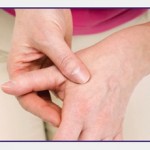Rheumatologists also consider such factors as age when interpreting some lab test results, such as erythrocyte sedimentation (sed) rate or C-reactive protein (CRP), says Elizabeth W. Karlson, MD, senior physician and leader of the Rheumatic Disease Epidemiology Group at Brigham and Women’s Hospital, Boston.
“Every clinician is taught to think about age when looking at those results. Interpreting a high sed rate is different if a patient is 80 instead of 40,” she says. Big data may not change established cutoffs for antibody tests, such as rheumatoid factor or anti-cyclic citrullinated protein antibodies (ACPA), but these ranges were based primarily on studies of mainly white patients, she says. “Past studies probably used blood banks for samples. Now, we are using large-scale biobanks, which have a more diverse representation of age, ethnicity and other factors.”
Most large-scale genome-wide association studies (GWAS) also mainly used data from white people, says Dr. Karlson, but genetic association can differ by race/ethnicity for some variants. To diversify genomic studies, she and other scientists are working on the All of Us Research Program, a new nationwide biobank research program that is part of the National Institutes of Health’s Precision Medicine Initiative. All of Us includes more than 120 recruitment sites across the country, and its goal is to recruit 1 million or more diverse participants of many ages, races, ethnicities and living environments reflecting groups who have been traditionally under-represented in biomedical research. Participants undergo physical examinations, answer health questions and contribute blood and urine samples.
Dr. Karlson directs one of the recruitment sites, All of Us New England, which has recruited more than 4,000 people in metropolitan Boston so far. Nationally, 81,000 people have signed up for the program, and 40,000 people (including 46% from racial and ethnic minorities and 76% from other under-represented groups) have completed all the steps, she says.
“Imagine 1 million samples! The goal is to genotype and phenotype all of them,” Dr. Karlson says. “The principle of this program is that all participants can see their test results and data over time, learn how to use their data and hear what research is being done. I think the transparency is contributing to incredible rates of participation in underrepresented communities.”
Imprecise Definitions
Health lacks a universally accepted definition, Dr. Ioannides and his co-authors write. In the Centers for Disease Control and Prevention’s National Health and Nutrition Examination Survey (NHANES), conducted from 2013–14, researchers analyzed survey data using three definitions of normality or health: 1) absence of common diseases such as heart disease or cancer, 2) a patient’s self-rating of health as excellent overall, and 3) the inclusion of only patients aged 18–40. Many patients who met one definition would be considered abnormal if they failed to meet one of the others, and only 5% of the NHANES survey population met all three, the paper says.


